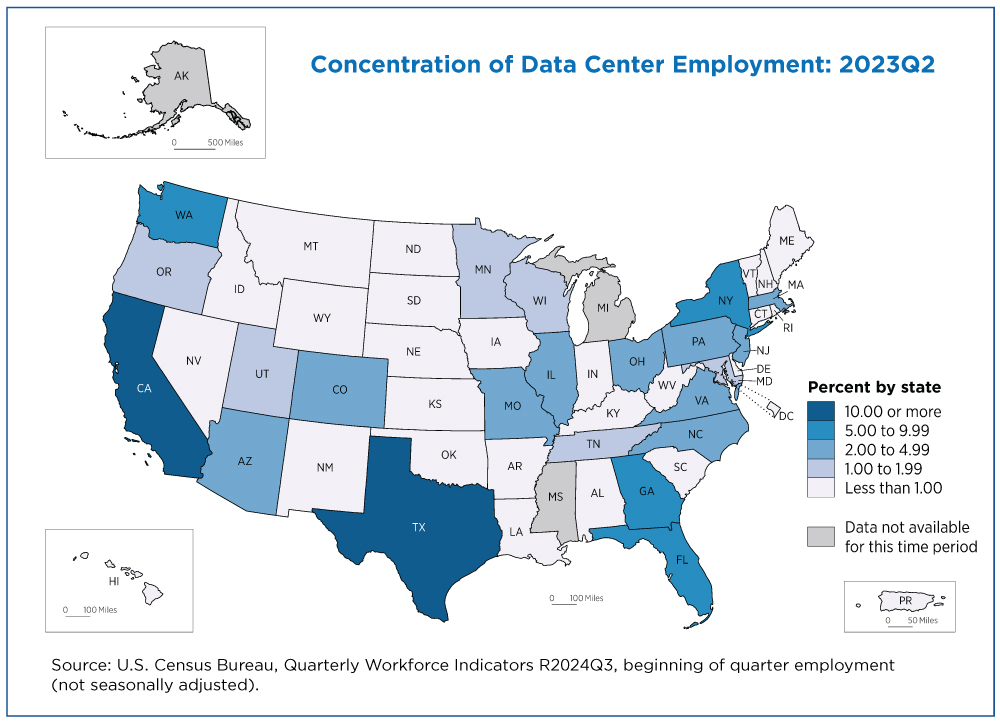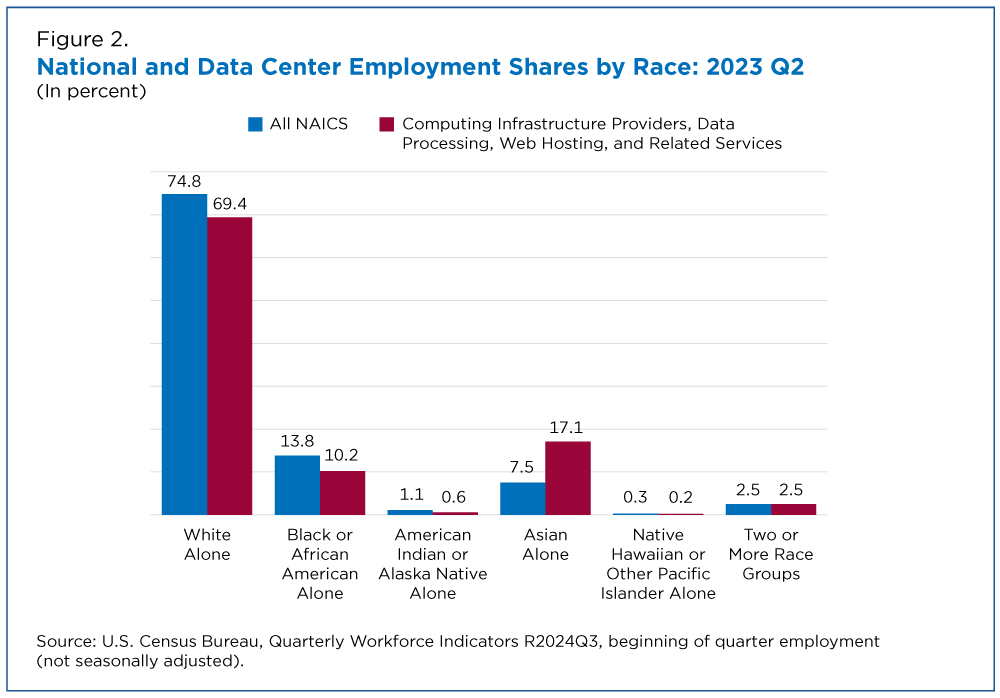Data Centers Growing Fast and Reshaping Local Economies
Employment in U.S. data centers — facilities that house the computer systems that store and manage data — increased more than 60% nationally from 2016 to 2023 but growth was uneven across the country, according to the U.S. Census Bureau’s Quarterly Workforce Indicators (QWI). The number of people working in data centers grew from 306,000 to 501,000 between 2016 and 2023, according to the Bureau of Labor Statistics. But the QWI shows where the growth is concentrated and provides a profile of data center workers.
The map below shows the concentration of data center employment by state across the United States. Not surprisingly, the two most populous states have the nation’s highest share of data center employment: 17% in California and 10% in Texas.
 Over 40% of U.S. data center employment are in five states: California, Texas, Florida, New York and Georgia. Employment was uneven within states, too.
Over 40% of U.S. data center employment are in five states: California, Texas, Florida, New York and Georgia. Employment was uneven within states, too.
In California, for example, three counties (San Francisco, Los Angeles and Santa Clara) accounted for 60% of the state’s data center employment. In Texas, nearly 75% was in four counties (Travis, Bexar, Collin and Dallas).
We also compared states’ share of data center employment with their overall employment growth between 2016 and 2023.
Our findings: The percentage of data center employment doubled in Arkansas and Alabama and grew significantly in the District of Columbia and other states, including Maine, Connecticut and Georgia.
Who Are Data Center Workers?
 The QWI also provides the demographic characteristics of data center workers. In the second quarter of 2023, Asian workers were the most over-represented group in data center employment: 17% of the data center workforce was Asian compared to 8% of the total U.S. workforce. White (69%) and Black (10%) workers were under-represented (Figure 2).
The QWI also provides the demographic characteristics of data center workers. In the second quarter of 2023, Asian workers were the most over-represented group in data center employment: 17% of the data center workforce was Asian compared to 8% of the total U.S. workforce. White (69%) and Black (10%) workers were under-represented (Figure 2).
There was also a large and persistent gender gap in data center employment, which widened in some states as more data center establishments opened and employment grew rapidly in the last few years.
We focused on two states — Washington and Virginia — to illustrate the gap between the share of men and women working in data centers.
In Washington, the gender gap in share of employment was about 23 percentage points until 2022. By the third quarter of 2022, it had increased to 26 percentage points.
In Virginia, the gap was 20 percentage points for most of the time until 2018, when it widened to 30 percentage points.
The data show that young firms in this industry were even more male-dominated than the broader sector and that, in general, older firms had a smaller but still sizeable gender employment gap. As data centers continue to grow and contribute significantly to local and national economies, the QWI is a useful resource to learn more about these trends in the workforce.
